The city as a playground. Outdoor Arts practices at Spot festival, Lithuania.
For the sixth summer, from June 29 to July 2, Arts Printing House in Vilnius welcomes the international street arts festival SPOT, inviting the audience to meet different approaches to arts in public spaces. Across international and local scenes, the festival collects a variety of artistic practices. This article condenses the thoughts of some of the protagonists of this edition, starting from the point of view of playfulness and curiosity traced by the Swiss multidisciplinary artist Massimo Furlan / Numero 23Prod and his itinerant and site-specific performance Blue Tired Heroes, hosted in Vilnius for the first time, to whom we asked a few questions. The article is written and edited by Valentina Barone.
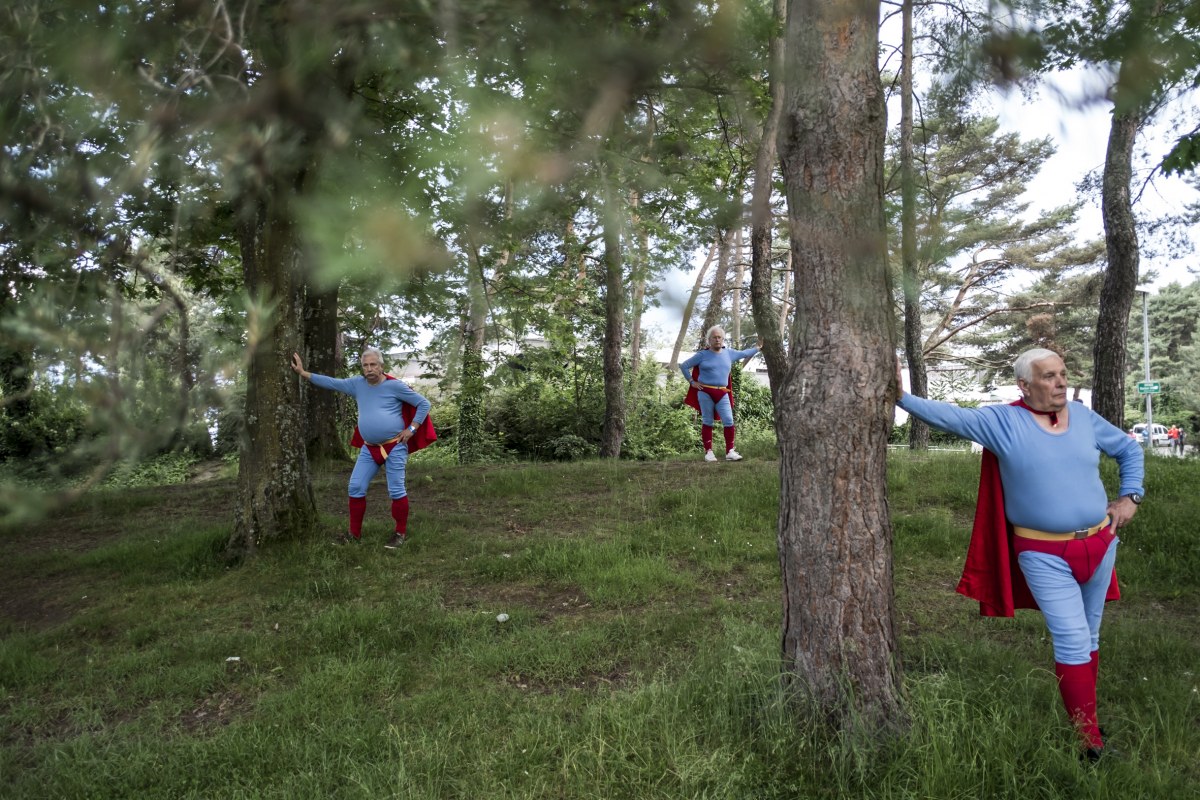
Where did the idea for this travelling performance that brings the extraordinary into the ordinary dimension of a city come from?
MF: Behind Blue tired Heroes lies a history of almost twenty years. The idea stems from one of my first works for the theatre, Love story (Superman), from 2005, a performance in which I involved many of my closest friends, all experts in theatrical techniques but not professional theatre actors. Six of us were on stage. Ordinary bodies, dressed as Superman. At the heart of the project was the exploration of missed opportunities. The silence of when you can't say the right thing at the right time, the emotion that makes you feel defeated and certainly not like Superman. The images were spectacular, the setting surreal, with little light, embodying the idea of self-defeat.
How do the power of memories and the use of settings act in your art practice?
MF: The use of the Superman costume comes from my favourite disguise as a child. I would put a scarf around my neck, climb onto the desk and then throw myself on the bed. For half a second, I would fly, and I was Superman. I could make my everyday life disappear by becoming someone else, escaping loneliness. The other child memory that shaped the performance was my hidden passion for a schoolmate of mine. I would hide in the bushes and watch her pass by, doing nothing to meet her, feeling an emotion I could not define. From the beginning of my career, it has always mattered more than the project itself; what I make the audience experience of the space, where positioning them to experience the performance. After Love story (Superman), I was asked to rethink the work by adapting it to outdoor space, and out of this need came Superman Cosmic Green, another derivation, which immersed the theme and its images in the Parc la Villette in Paris. You adapt a show, and suddenly something makes you think about what you could do next. Working in a public space, I wondered what it would be like to involve unknown people and focus on old age. Blue tired Heros was born this way, encountering different contexts and people, thus generating an ever-changing performance. The performers are from seven to twelve, aged more than sixty years, chosen by the festival, women and men united by the fact that they are old, beautiful bodies, shot through with the physical memory that life brings. The performance itself is simple and does not need any acting skills. On the contrary, the more spontaneity emerges, the better.
How does the preparation of the performance take place?
MF: I meet the group of unknown people, and we work out the performance in two days. The first phase is scouting the available space: I go and look where there are possibilities, I see if the festival suggests a route and how much freedom we have, I convey my ideas to the group, and we make a few attempts to try out together. On the day of the performance, I move around with them, discreetly giving directions for the development of the scenes. The group is organised to make these images that I call "long images". They remain seated or standing longer than we used to see an image. In a temporally choreographic long dimension, the images transform, change, move, and interact in space. The supermen always remain in a group, and the audience interacts with them. Sometimes people are waiting for their appearance or being taken by surprise, which is the most exciting part. It is also interesting to be able to trigger a reflection on the power of the image of Superman, of surveillance, of the strength associated with this image, and to combine it with the concept of old age, depression, and tiredness. What can these Supermen in pyjamas protect us from today?
What feelings does the performance give to the participants and to the audience that meets it?
MF: Watching them all together is wonderful, and people smile and take pictures. The audience's attention is captured by the simple presence of something deeply curious. In this sense, the performance uses the basic principle of theatre. The beauty of the process is that a group is created between strangers. I like this short, intense experience condensed in time. Working with older people, the timing is crucial, and actions cannot be too long. In the summer, you must protect them from the shade. We try to find places that are not too central and crowded to immerse the actions in unusual spaces where you certainly don't expect to see a group of superheroes. Performers can also take public transport. A beautiful anecdote happened in Prague: noticing the group of performers waiting on the platform from the cameras, the underground guards - instead of stopping us - played the musical theme of Superman from the loudspeakers, giving the action an unexpectedly joyful character and thus actively participating in its realisation.
The festival design a broader vision of how to play in urban landscapes
From the interview with Massimo Furlan, we wanted to hear more from other perspectives involved in this festival’s edition. Each year, SPOT invites the audience of Vilnius to see the city in a different way, creating a temporary space for experiments that cultivate the imagination. From the itinerant to the site-specific format, the artistic practices reveal multiple storytelling approaches.
In public spaces, there exist unspoken codes regarding ownership - a park with birds is associated with grandmas, a bench near the station is often occupied by local alcoholics, and skaters claim the sculpture on the cathedral square. These invisible structures assist us in navigating the city, but they also impose limits on our imagination regarding what is possible within public spaces.
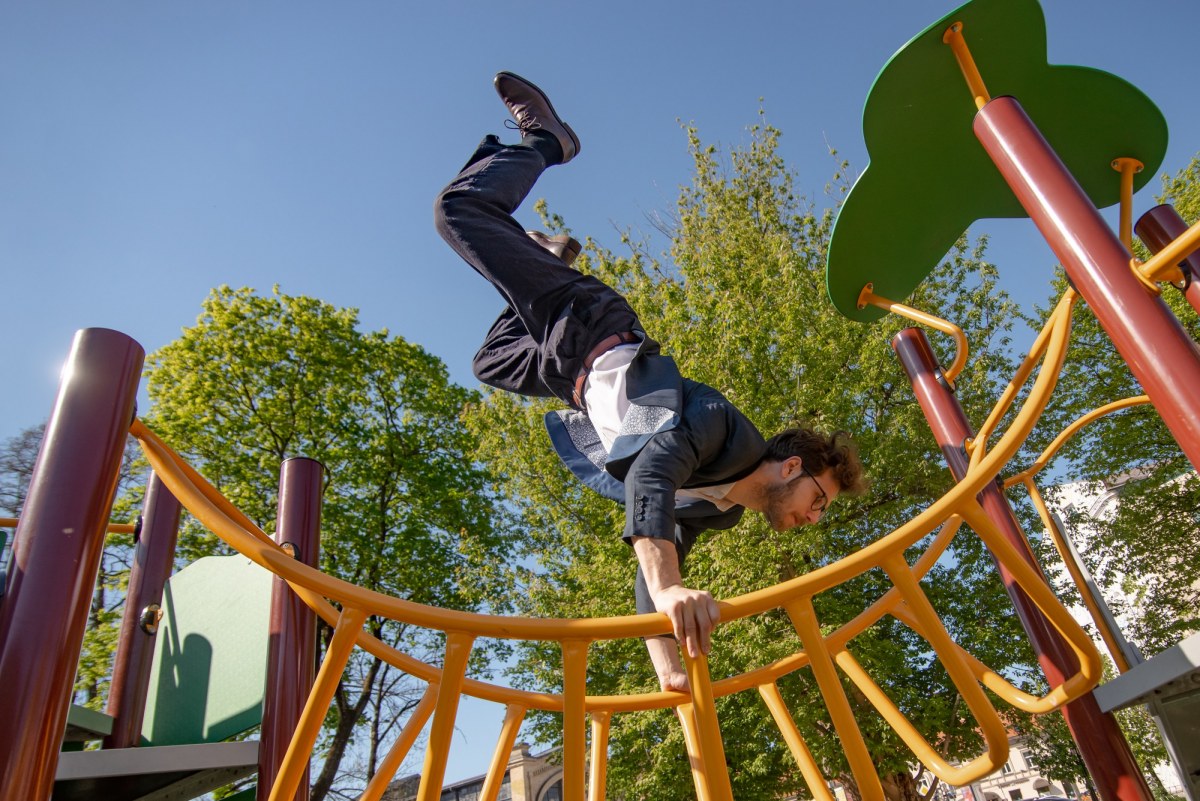
If Massimo Furlan Blue tired Heroes interact in the city, with the project Playces - Playgrounds, the Lithuanian artist Markas Liberman chose to create a show in public playgrounds, exploring what the site elements offer physically and semiotically where childhood, adolescence, and adulthood intersect. In public spaces exist unspoken codes regarding ownership - a park with birds is associated with grandmas, a bench near the station is often occupied by local alcoholics, and skaters claim the sculpture on the cathedral square. These invisible structures assist us in navigating the city, but they also limit our imagination regarding what is possible within public spaces. At 5 in the evening, the playground space belongs to children, and as night falls, local teenagers begin to gather on the swings. Liberman explores the inherent conflict between adulthood responsibilities and childhood carefree nature challenging playgrounds settled rules. He invites the audience to reassess their relationship with spaces dedicated to playing, reminiscing about childhood experiences, and contemplating the physical environment necessary for adult play.
Liberman explains: "I question whether we can still carve out space for playfulness, silliness, and irresponsibility while balancing the demands of being an adult. The show serves as a reminder that we have the power to shape and redefine the invisible codes that govern public spaces, allowing us to create environments that align with our collective and individual needs and desires."
After celebrating its fifth anniversary, the festival had a turning point. Previously SPOT educated the audience, bringing street art projects from Catalonia, Belgium, France, and other countries. For its 6th edition, more than half of the program consists of Lithuanian creations. Jolita Balandytė, the director of Arts Printing House, comments on the slight shift of gradually including Lithuanian performances: "An achievement and a joy to share, especially with the large group of festival ambassadors – artists who spread the message about the festival happening in Vilnius”.
Site-specific performances offer a unique form to talk about the past and present of the specific places’ history. The real environment and the fiction that revives it, as well as offering new and unexpected stories about seemingly familiar and inviting new spaces
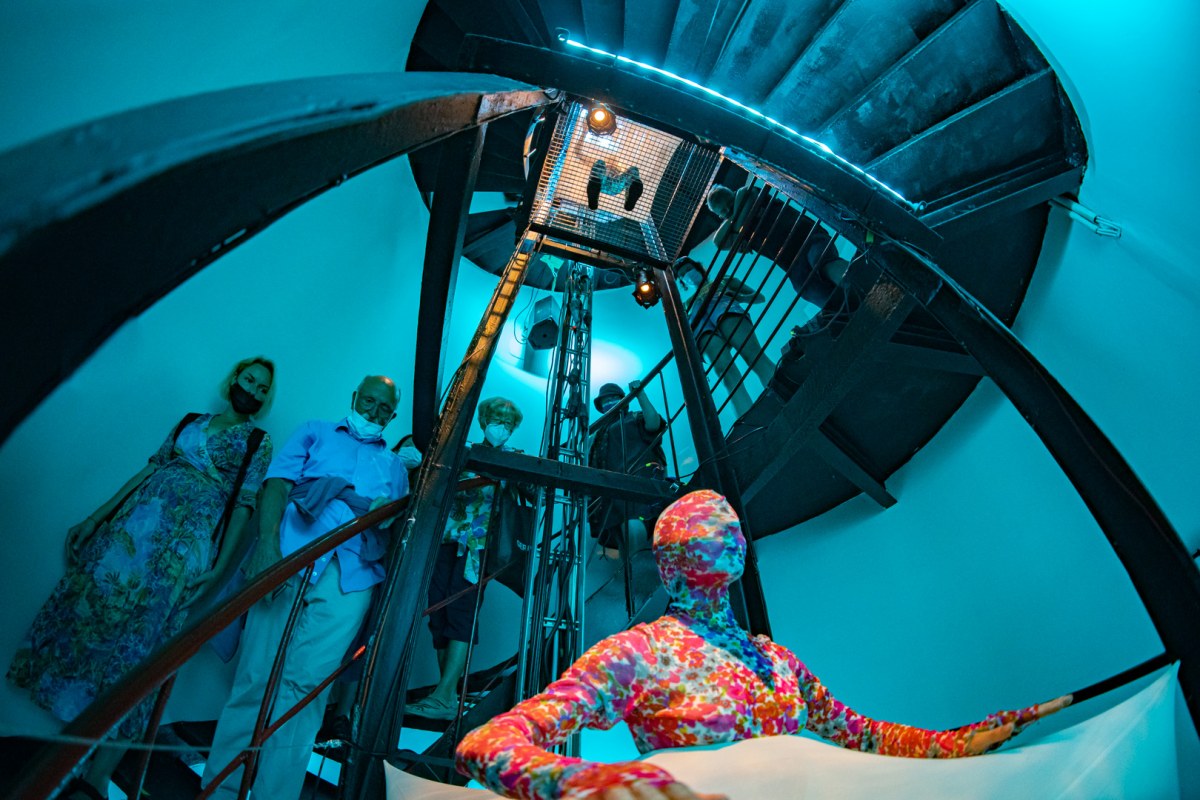
Agnija Seiko, director of Šeiko Dance Company, underlines that site-specific performances offer a unique form of art to reveal the past and present of a specific place: “Through contemporary dance, the movements of the dancers scattered in the urban or natural environment give life to the poetic and musical narrative, creating a unique experience for the audience". Her method combines history, architecture, movement, archaeology, sound, and text, where the spectators can experience the environment and the fiction that revives it, mixing stories about seemingly familiar and inviting to explore the space with new eyes.
The independent urban anthropologist and researcher Jekaterina Lavrinec pointed out the growth of interest of Lithuanian artists in outdoor arts creating in public spaces: “I had an amazing experience of inviting Gildas Aleksa (Teatronas) to one of the blocks of flats quartal in Vilnius to work with the local kids. His team proposed a perspective rooted in performance arts, turning the local yards into a place where children experimented with the urban furniture, placing it in various public locations, hiding it from the parents, and using it as a part of the game, which they co-directed.”
To close this variety of thoughts, the organiser Judita Strumilaitė explains the challenges behind the scenes of this edition and the opportunities that have arisen with them: “In Lithuania, we often use the saying that when the door closes, you must climb in through the window. The festival's plans were severely altered by the NATO Summit in Vilnius this July. We had to change the dates twice and lost part of the programme. The team is always looking for a solution when a problem arises, so we've encouraged Lithuanian creators to submit even more of their work by launching an open call. Moreover, close links with international partners have helped us maintain our international programme and its funding.”
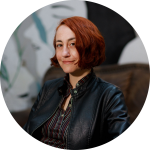
Valentina Barone is a freelance cultural manager and editor specialising in the contemporary circus and live performance sector. Since 2021, she has been Director of International Relations at the CircusDanceFestival in Cologne (Germany). She holds a BA in Performing Arts Techniques and a Master's degree in Relationship Design. She works with the international network Circostrada (France) and is an active member of the Cirkus Syd' Circus Thinkers Platform (Sweden). Valentina is the coordinator of the international digital platform Around About Circus.



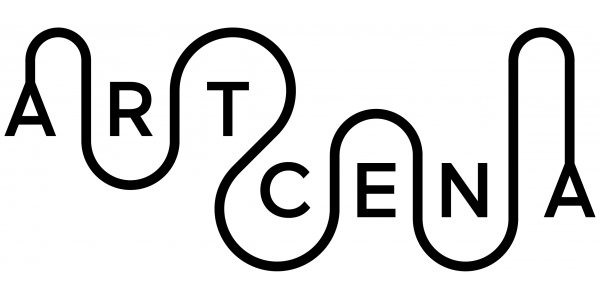

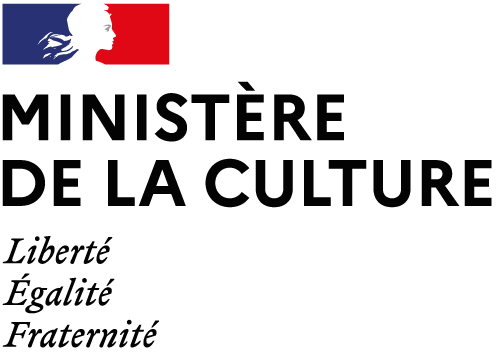
write us: infocircostrada@artcena.fr